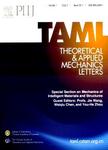Calculating buoy response for a wave energy converter-A comparison of two computational methods and experimental results
Calculating buoy response for a wave energy converter-A comparison of two computational methods and experimental results作者机构:Division of Electricity Department of Engineering Science The Angstrom Laboratory Uppsala University Box 534 75121 Uppsala Sweden Center for Natural Disaster science (CNDS) Villavagen 16 SE-7S2 36 Uppsala Sweden
出 版 物:《Theoretical & Applied Mechanics Letters》 (力学快报(英文版))
年 卷 期:2017年第7卷第3期
页 面:164-168页
核心收录:
学科分类:07[理学] 0707[理学-海洋科学] 080103[工学-流体力学] 08[工学] 080104[工学-工程力学] 0801[工学-力学(可授工学、理学学位)]
基 金:supported by the Center for Natural Disaster Science(CNDS) the Swedish Research Council(VR,Grant Number 2015-04657) Lars Hiertas Foundation Bengt Ingestrms scholarship fund
主 题:Hydrodynamic simulation Linear potential flow theory Experiments Wave energy Lysekil research site
摘 要:When designing a wave power plant, reliable and fast simulation tools are required. Computational fluid dynamics (CFD) software provides high accuracy but with a very high computational cost, and in operational, moderate sea states, linear potential flow theories may be sufficient to model the hydrodynamics. In this paper, a model is built in COMSOL Multiphysics to solve for the hydrodynamic parameters of a point-absorbing wave energy device. The results are compared with a linear model where the hydrodynamical parameters are computed using WAMIT, and to experimental results from the Lysekil research site. The agreement with experimental data is good for both numerical models.



